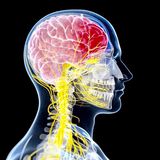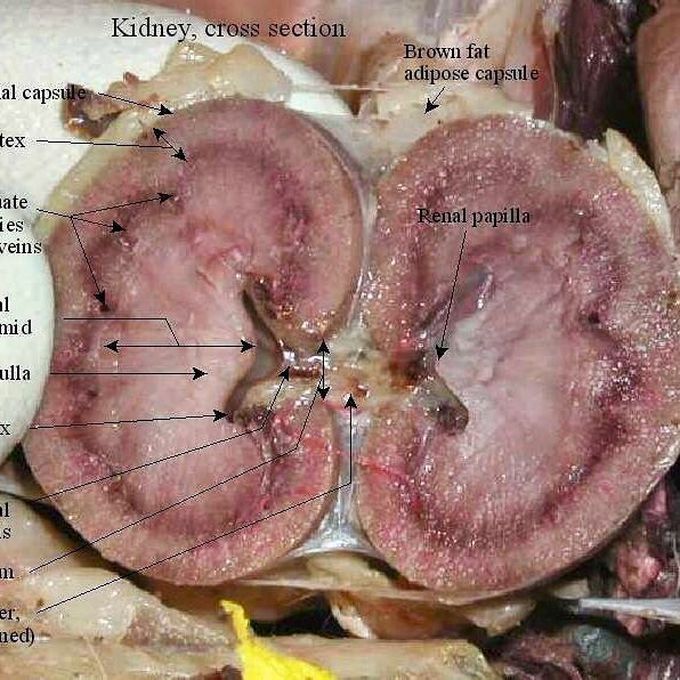


Cross sectional view of Kidney with each part labeled.When the body has taken all it needs from foods and liquids, the waste is carried away in the blood. The kidneys’ job, among others, is to remove that waste to prevent damage to the body.Of the approximately 180 liters of liquid passing through the kidneys a day, less than half actually turns into urine. The amount of water in urine depends on a complex mixture of liquid intake, physical activity, and influence from the antidiuretic hormone (a small molecule that helps control water balance) from the pituitary gland.Urine is typically 95 percent water and 5 percent dissolved solids and gases. It contains the following:-waste from nitrogen: creatinine, urea, and uric acid-electrolytes: salt and sulfates-pigment: derived from bile, food, and drugsThe waste removal occurs inside millions of tiny coiled tubes of arteries, veins, and ducts called nephrons. The nephrons filter unwanted materials while keeping proteins and cells in the bloodstream.Before the liquid leaves the body as urine, the kidney further fine-tunes the composition of the urine through a process known as tubular secretion. During this, potassium enters urine, as well as fine-tunes the pH balance of bodily fluids by hydrogen ion secretion.At the tip of each nephron, a tiny capillary called a glomerulus intertwines with a tubule. A tubule is a microscopic tube used to collect urine. This is where waste leaves the blood and enters the urinary system.If the kidneys decide to keep substances, they go through a process known as tubular reabsorption. The needed materials pass back through the bloodstream where they will be used again and Recycled.

